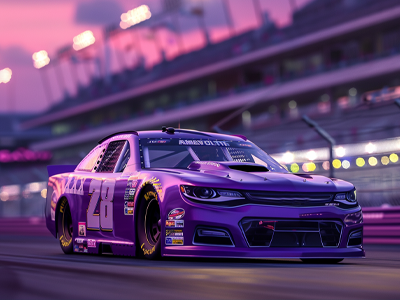Drivers almost always perform better on certain types of tracks, which will influence how you wager
Understanding NASCAR driver performance on different track surfaces is crucial for fans, teams, and drivers alike. Each type of track—whether asphalt, concrete, or dirt—has unique characteristics that affect how cars handle, which in turn influences race outcomes.
Asphalt tracks are the most common in NASCAR. They provide a smooth surface that allows for high speeds and better grip. Drivers often prefer asphalt for its predictability, but track temperature and rubber build-up can change how cars behave throughout a race. For instance, when the sun heats the asphalt, the track can become slippery, challenging drivers to adjust their handling and strategy as the race progresses.
Concrete tracks, while less common, present their own set of challenges. They can provide a rougher surface compared to asphalt, which can affect tire wear. Drivers need to be aware of how their tires will perform over time, especially in longer races. Additionally, the surface can be prone to “marbles,” small pieces of tire rubber that accumulate off the racing line, making it difficult for drivers who stray too far from the optimal path.
Dirt tracks, another category in NASCAR, demand a completely different skill set. These surfaces are more unpredictable and can change drastically throughout a race due to weather conditions and racing dynamics. Dirt drivers often need to rely on instinct and feel rather than precise handling, as the loose surface can lead to slideways and more aggressive driving styles. Mastering dirt track racing requires a unique ability to read the surface and adapt quickly.


